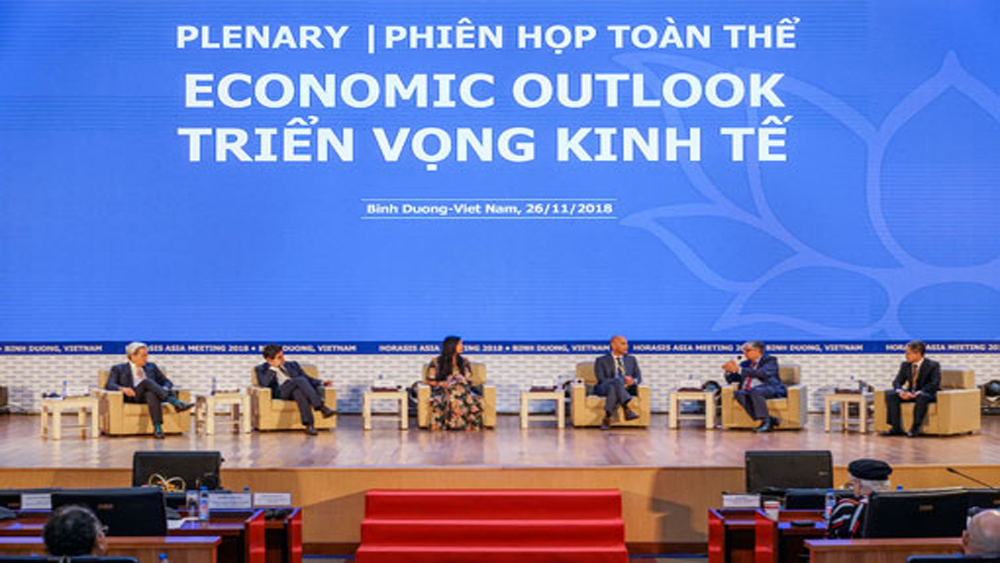Horasis meeting looks into ASEAN, new Asian regional groups
Related news  |
The plenum attracted local officials, business executives from many countries, and Vietnamese and foreign researchers.
 |
|
A plenary session of the 2018 Horasis Asia Meeting in Binh Duong province on November 26. |
They heard that the ASEAN has been a calming presence for more than 50 years, with new groups emerging with even stronger business orientations. These developments have brought broad consequences for Asia, Europe, and global business.
Speakers mentioned issues relating to the future of Asia, such as the creation of a favorable ecosystem for businesses to grow, energy transition, and the free movement of Asia.
They suggested making use of diversity to improve governance capacity; investing in the Internet of Things, education, and health care; while also boosting technological cooperation and development.
Participants also pointed out advantages and challenges facing some countries amid new development trends. They said it is very important to enhance ASEAN’s transport connectivity and seek new markets so as to fuel regional development.
Bryan Yang, CEO of China’s Inspiration Inc., said the global economic outlook has been affected by multiple factors recently, including the US-China trade tension. This has created great opportunities for ASEAN countries.
He added that his firm is seeking investment chances in the region, including Vietnam, mainly in the fields of education, health care, finance, and technology.
Huynh Quang Hai, a standing member of the Board of Directors at the Vietnam-Singapore and Industrial Park (VSIP) Group, said the development of ASEAN will bring about numerous benefits for its members.
To attract ASEAN investors, new VSIPs are being built under a smarter model with more efficient infrastructure and more stable energy supply sources. The VSIP Group, founded based on a 1994 initiative of the prime ministers of Vietnam and Singapore, is working with Singaporean partners to apply advanced technologies to boost the efficiency of its VSIPs, Hai noted.
Source: VNA
 Bắc giang
Bắc giang















Reader's comments (0)